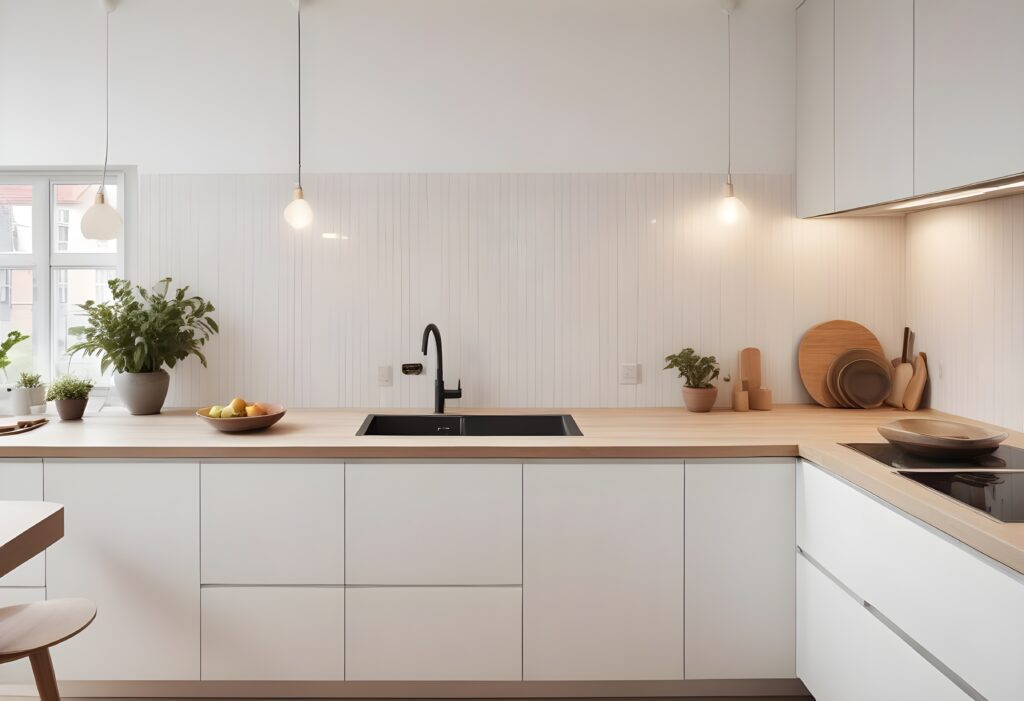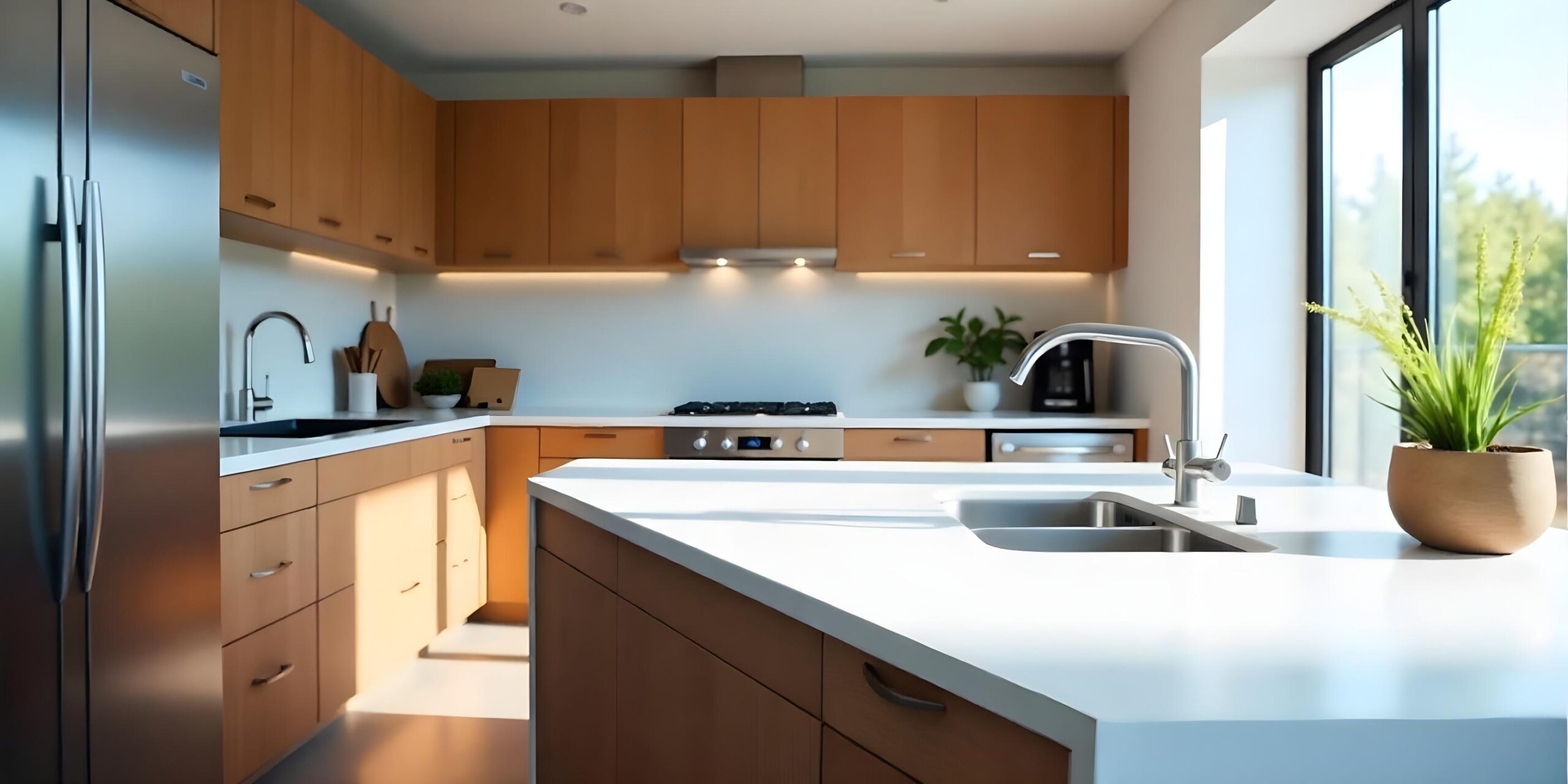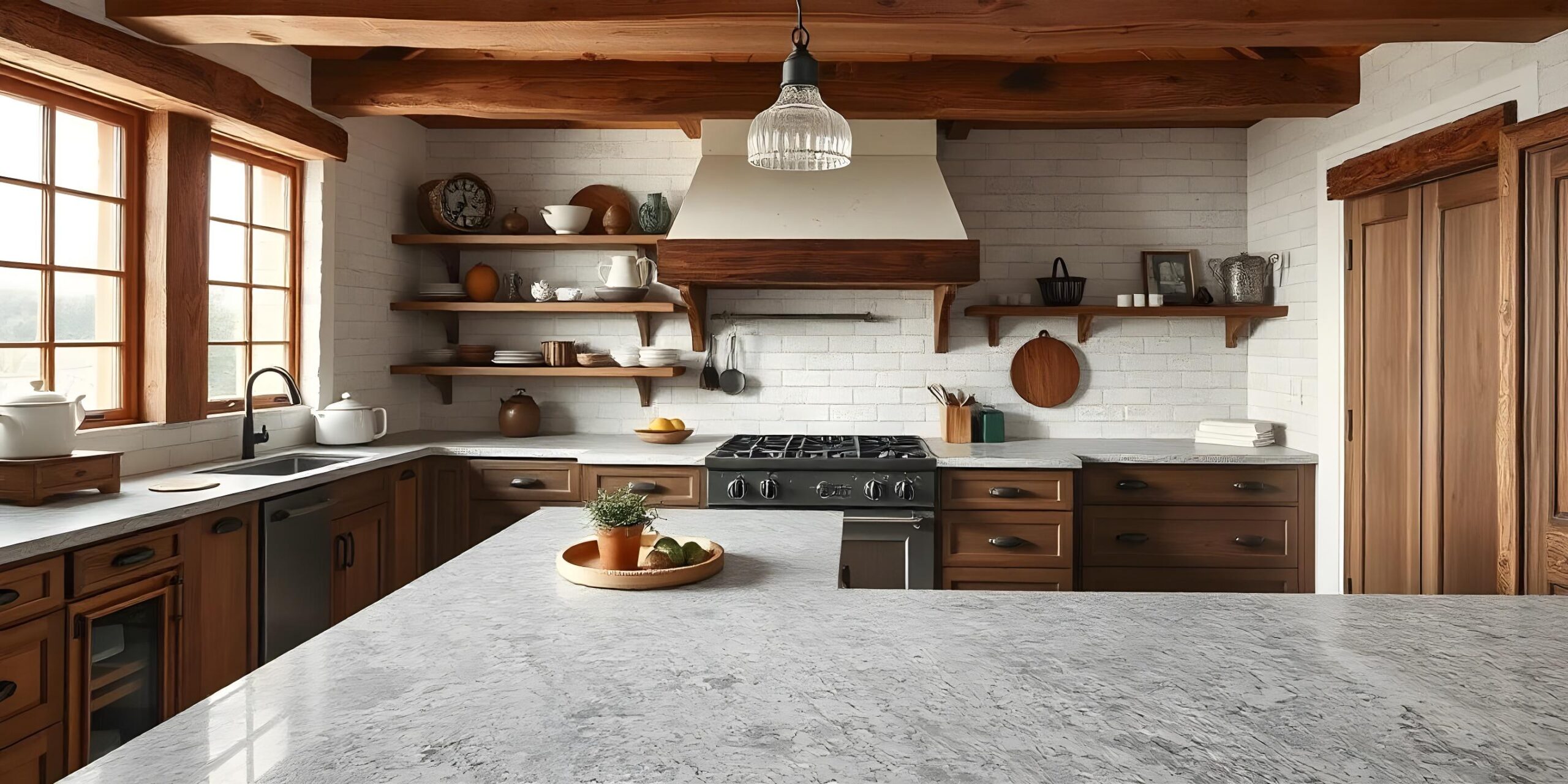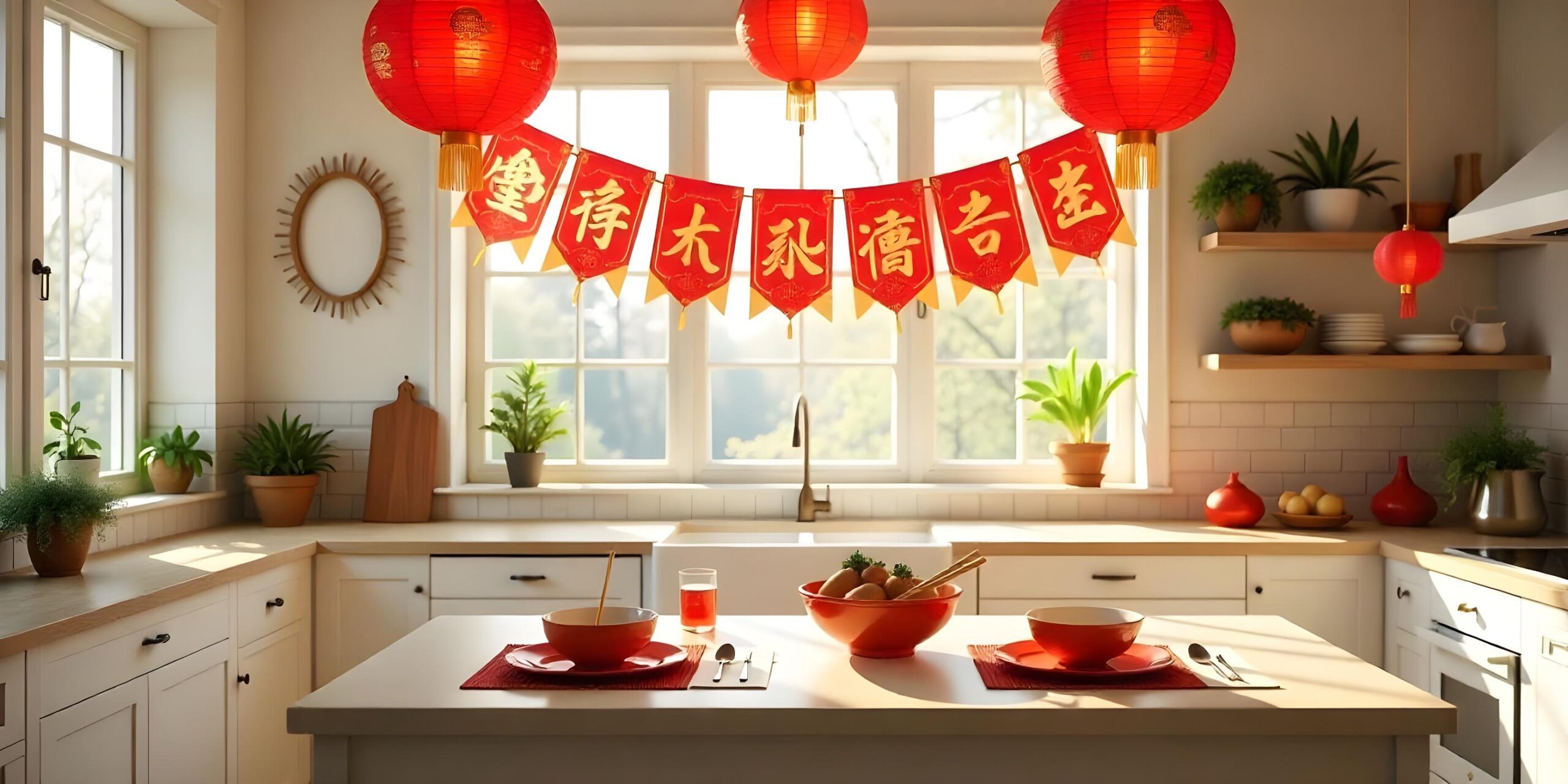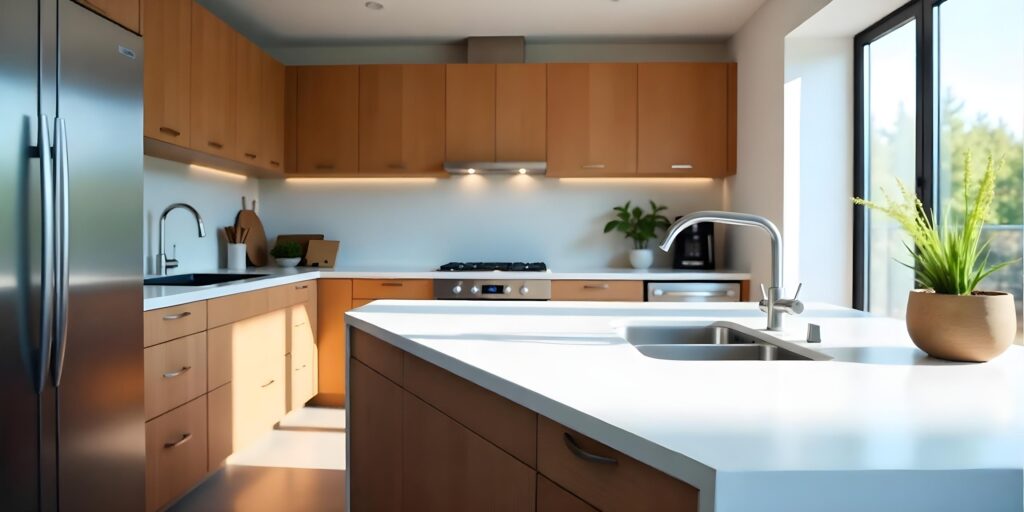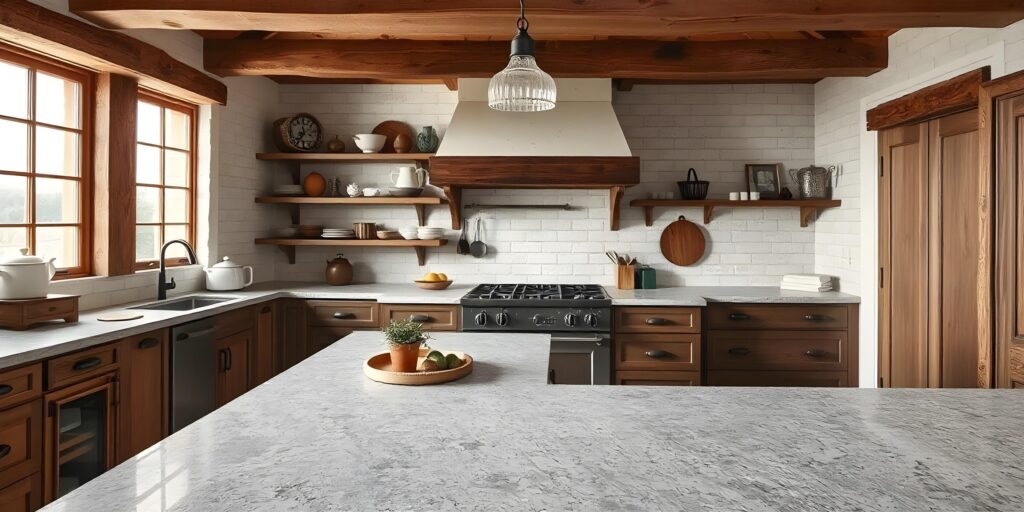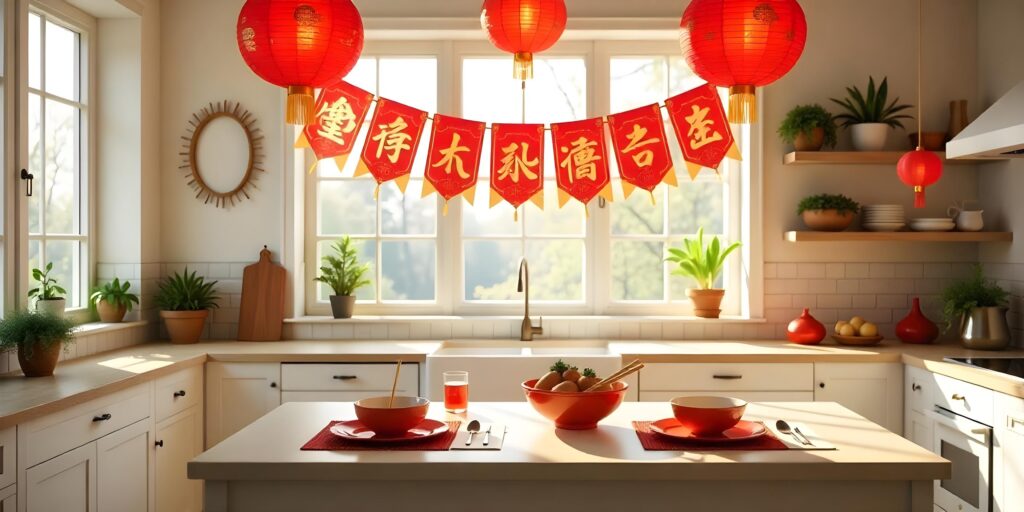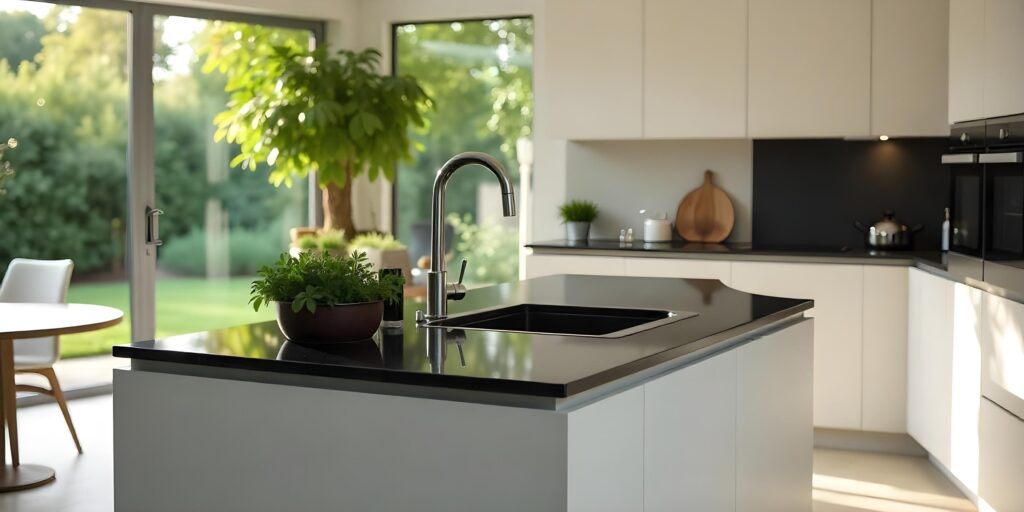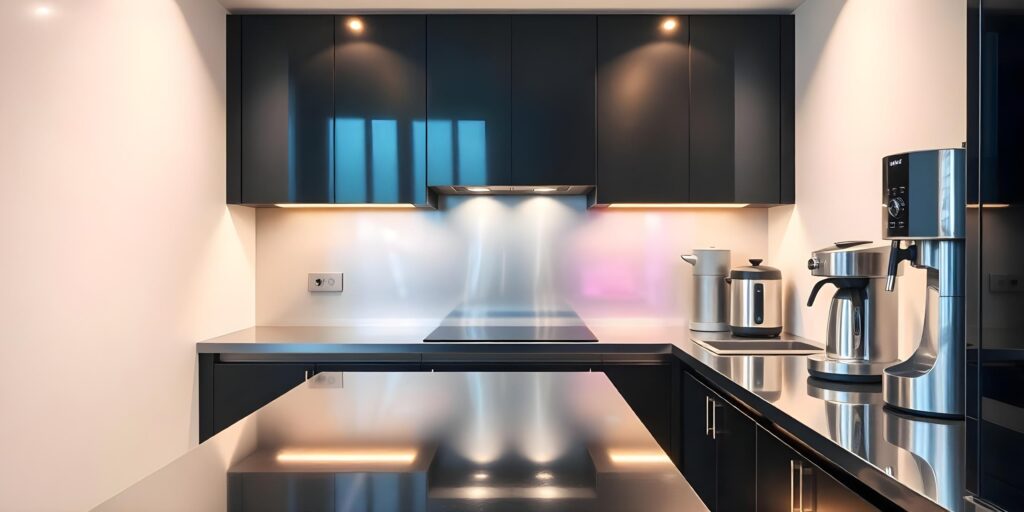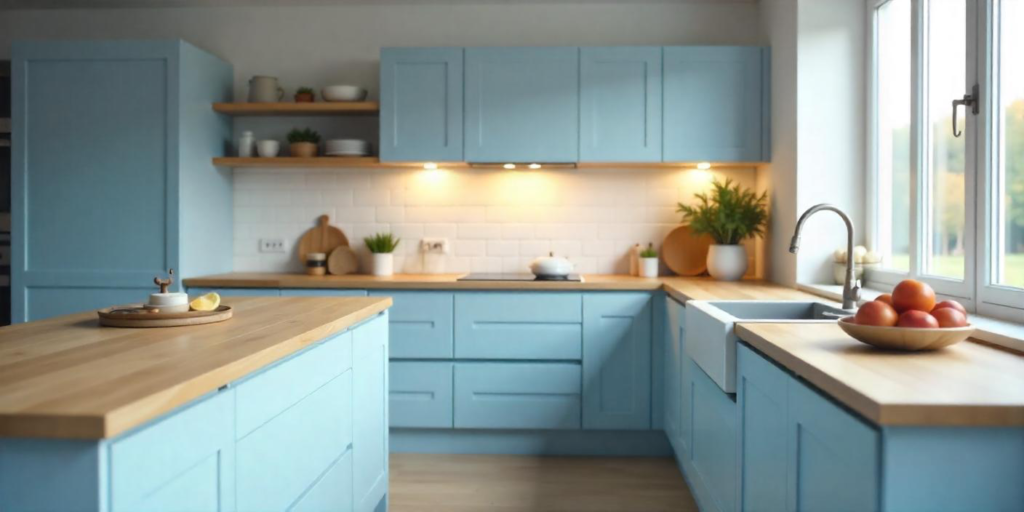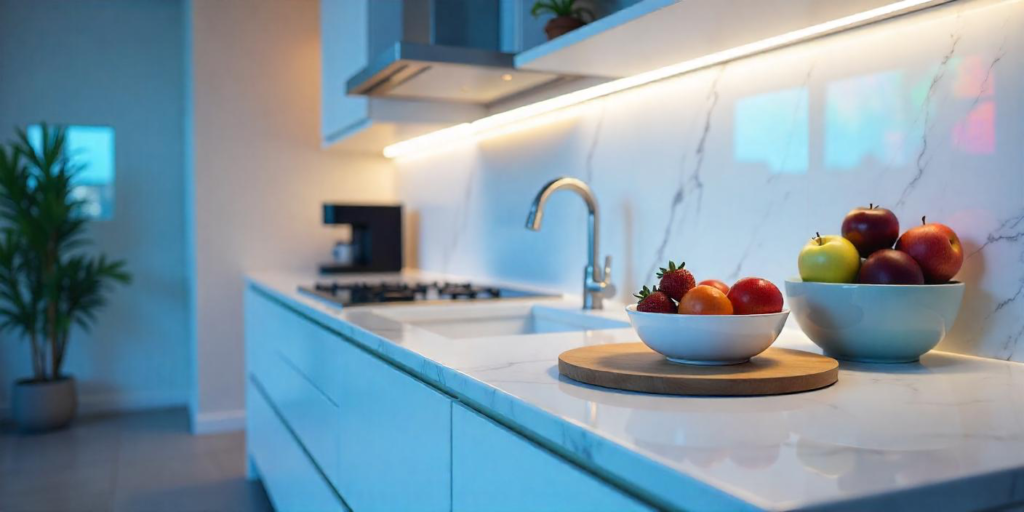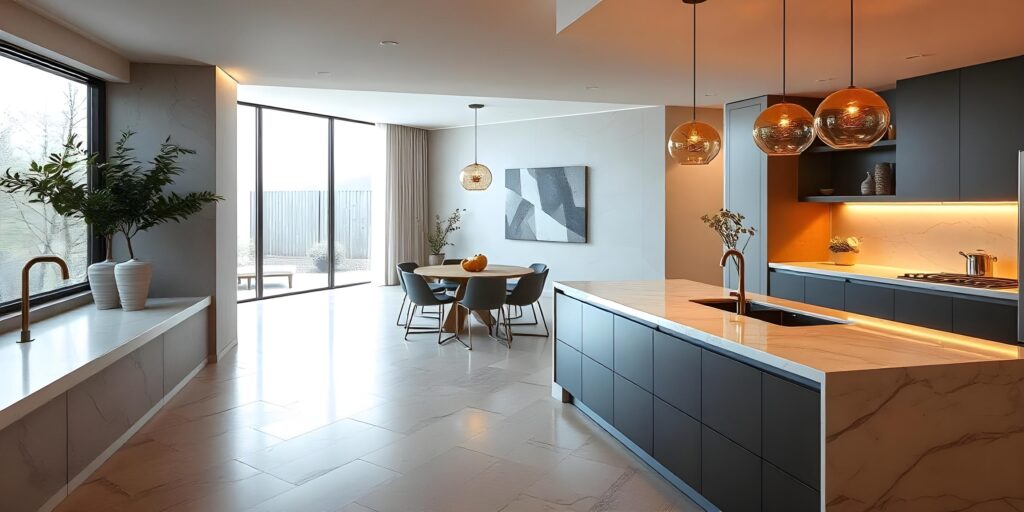Laminate countertops come with many pros and cons that home owners should be aware of before making a purchase. Here are 4 important pros and cons before choosing this material for your kitchen countertops.
Pros
Laminate Countertops #1: Affordability And Cost
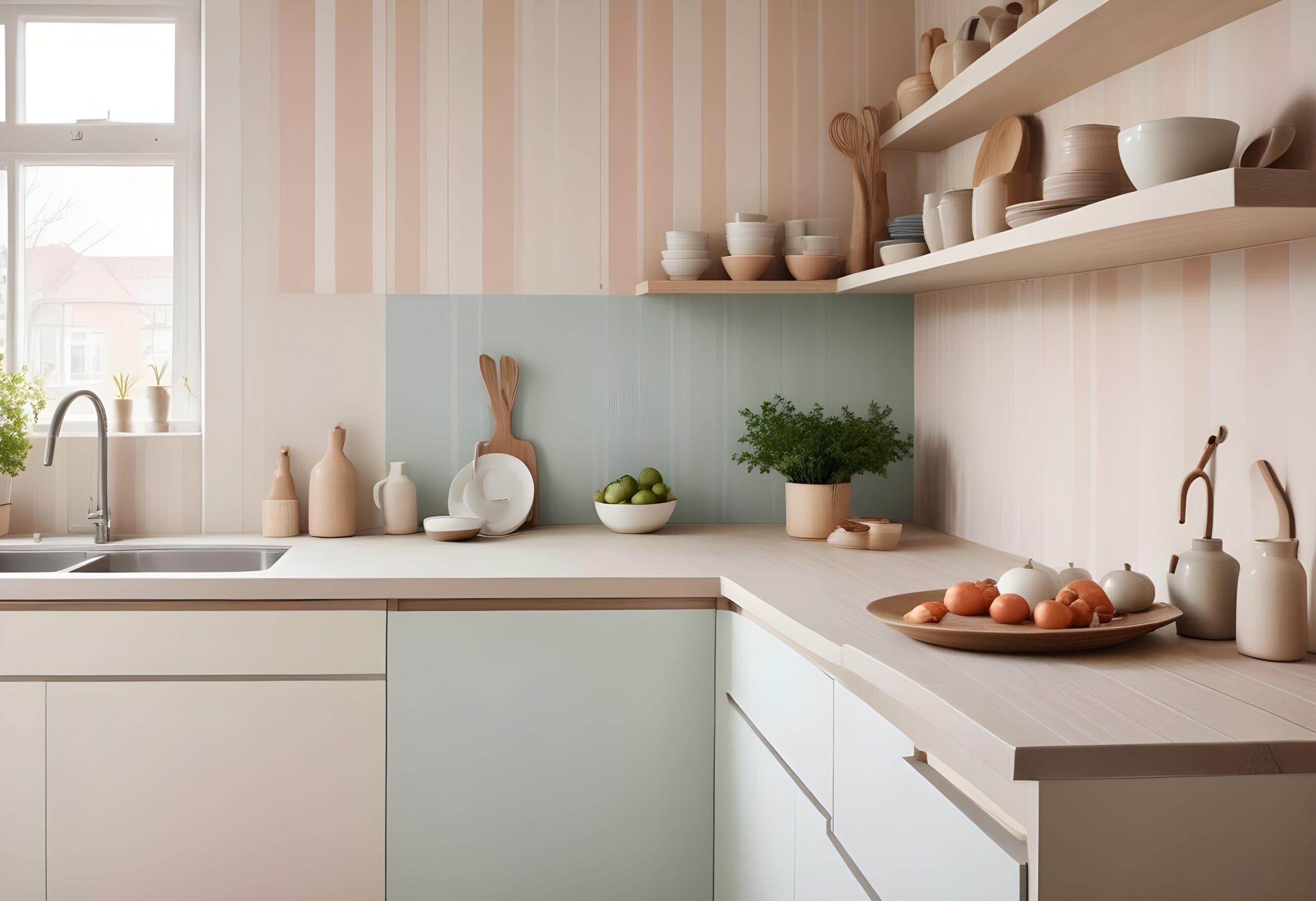
Of all the countertop materials available, laminate happens to be one of the most budget-friendly and therefore ideal for home owners looking for a cheaper alternative. The cost saving characteristic of the laminate countertops does not compromise on the expense of quality or aesthetics.
Much improved manufacturing techniques have made the laminate counters available today in so many designs, colours and textures that their appearance can be made similar to more expensive materials such as granite, marble and wood. This allows the owner to have a high-end appearance without the high-end cost. Besides, the cost of materials for a laminate countertop is reasonably low compared to that of natural stone or solid surfaces — makes it within budget to cover larger areas or multiple rooms.
Installing laminate countertops is also relatively easy to which adds to their cost-effectiveness. Since they are lightweight and can be assembled with basic tools, a huge chunk of the labour costs are considerably less when weighed against other more complicated countertop installations. In fact, for those with a good amount of DIY expertise, laminate countertops can be installed without professional help which saves even more money. In the area of maintenance, laminate countertops prove their worth. They are easy to clean and do not need special treatments or sealants which help cut down on the cost of their maintenance.
One of the greatest advantages of laminate countertops is that because they are prone to fewer types of damage, they will tend to look new and fresh with very little maintenance. If home owners are looking to renovate their kitchen or bathroom on a tight budget, laminate countertops offer the perfect mix of affordability, looks and functionality. They give out a stylish look to the kitchen space while ensuring that the renovation can be done quickly and affordably. In the bigger scheme of things.
Laminate Countertops #2: Ease In Maintenance
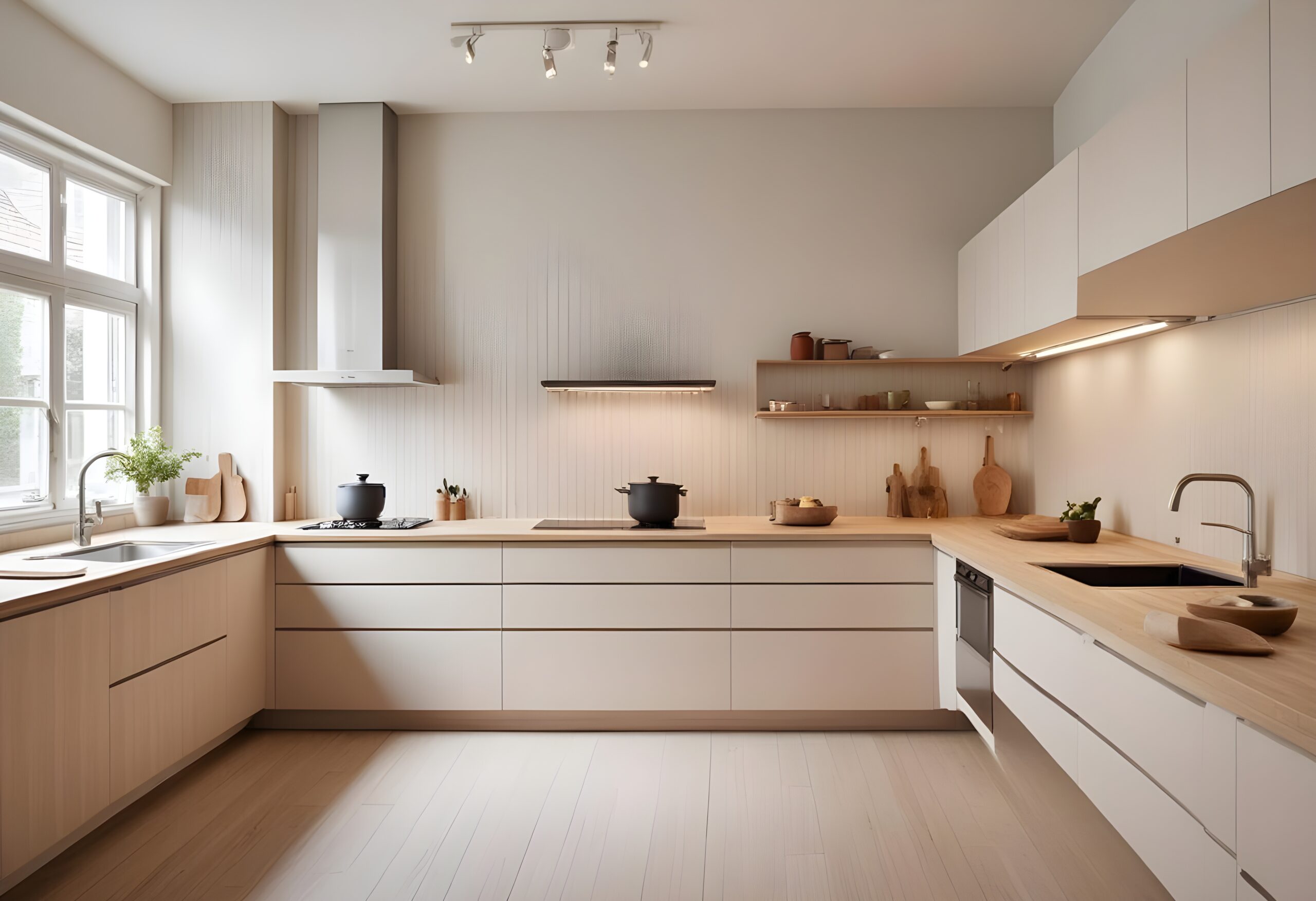
The ease of maintenance has made laminate countertops very attractive to busy households and commercial spaces alike. One reason behind the popularity of laminate countertops is that cleaning them is very easy. Unlike natural stone countertops where cleaning often requires special elements and regular sealing is a must, laminate countertops have a simple cleaning process which only requires mild soap and water. The non-porous surface resists stains, spills and splatters which can be easily wiped away. This is an added advantage when in the kitchen since countertops are often exposed to spills from food and drinks. Besides, the laminate countertop tends not to stain from the common kitchen messes.
Another factor contributing to the low maintenance of laminate countertops is their inherent durability against common household aspects. They are designed to withstand small scratches and abrasion from ordinary usage. Although it is always best to use cutting boards to avoid deep cuts, the natural resistance of the surface means that small accidents will not ruin its appearance. There are no periodic treatments or sealing required with laminate countertops unlike granite or marble — long-term maintenance costs can be reduced. significantly
The ease with which a laminate countertop is maintained extends to general upkeep as well. Most of the time, a damp cloth and a light solution are really all that is necessary to keep the countertop looking good. For harsher stains, lightly scrubbing baking soda and water on the surface usually gets them back to their pristine self. The low maintenance aspect that comes with having laminate countertops makes this the best option for home owners who would appreciate a functional piece that is both efficient and beautiful.
Cons
Laminate Countertops #1: Prone To Damage
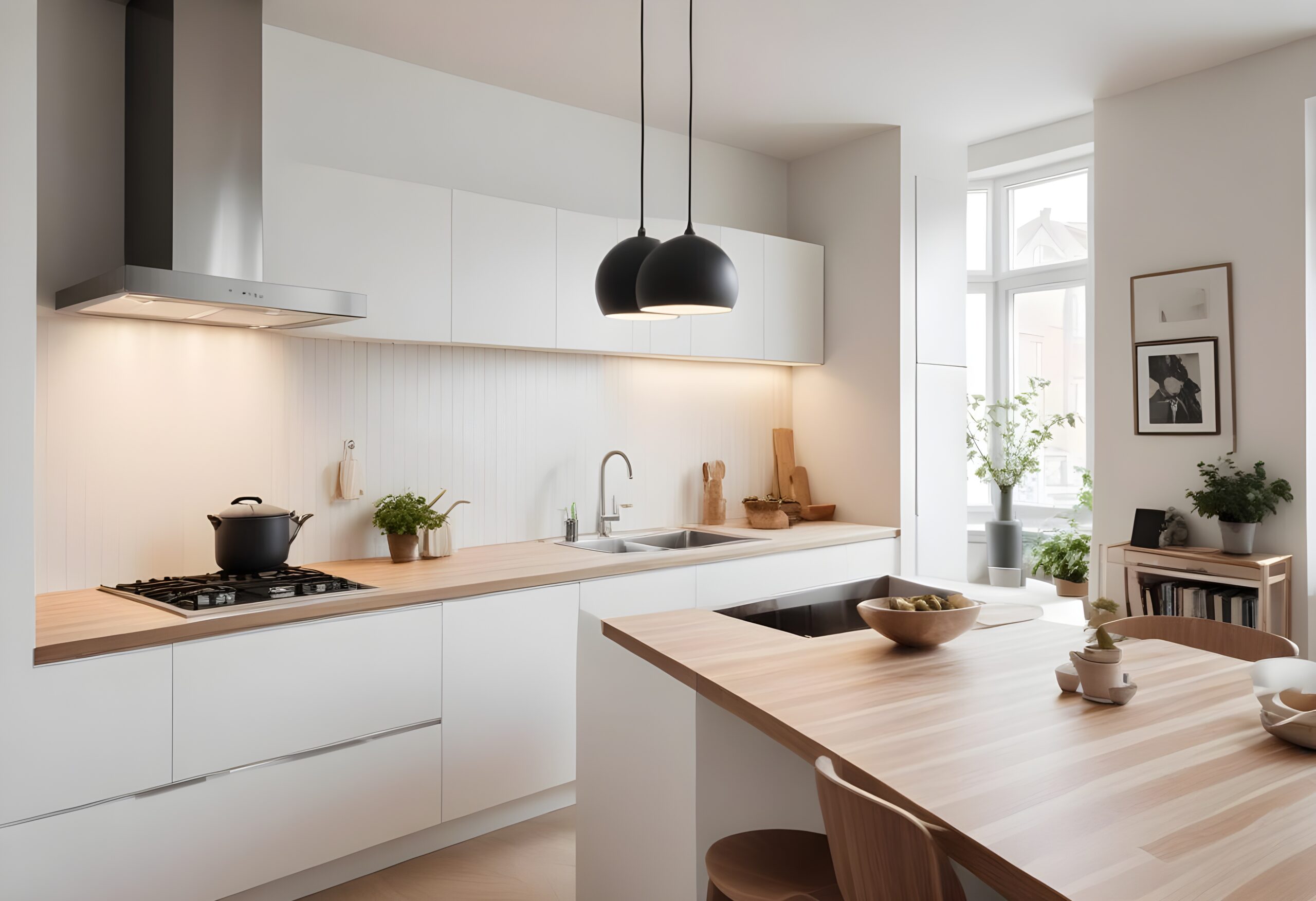
One of the major cons associated with laminate countertops is their susceptibility to huge amounts of damage despite their popularity based on price and the wide range of variety. Some of the primary vulnerabilities include scratching. Though it is hard, the surface can be easily marred by sharp objects. This means that cutting boards should consistently be in use since direct contact with knives can cause scratches and marks.
Generally, laminates are able to resist minor impact but the edges and corners have the potential to chip off and crack very easily. Those areas, once damaged, are pretty difficult to repair seamlessly and would need to be completely replaced — which can be very inconvenient and expensive. Another concern is its susceptibility to moisture. If water seeps into the seams or under the surface, it could swell — deteriorating the underlying particleboard and leading to damage. This becomes more of a problem especially in areas prone to spills or near sinks where the exposure to water is much more higher.
Another major drawback of laminate countertops is that they are highly subject to damage — when the top layer separates from the core material. This is something that usually occurs due to long-term exposure to moisture or damage upon impact. Not only does this affect the aesthetic appeal of the countertop, it can also disrupt its structural integrity.
Moreover, the perfect matching of an exact colour or pattern for repairs is difficult; therefore, any attempt to fix damages may tend to be very noticeable. In conclusion, home owners should consider the vulnerabilities mentioned above. They should understand that the usage and maintenance of laminate countertops must be done with great care — despite their cost-effectiveness and design versatility, they may not fully withstand the rigours associated with a fast-paced kitchen environment.
Laminate Countertops #2: Low Resistance To Heat
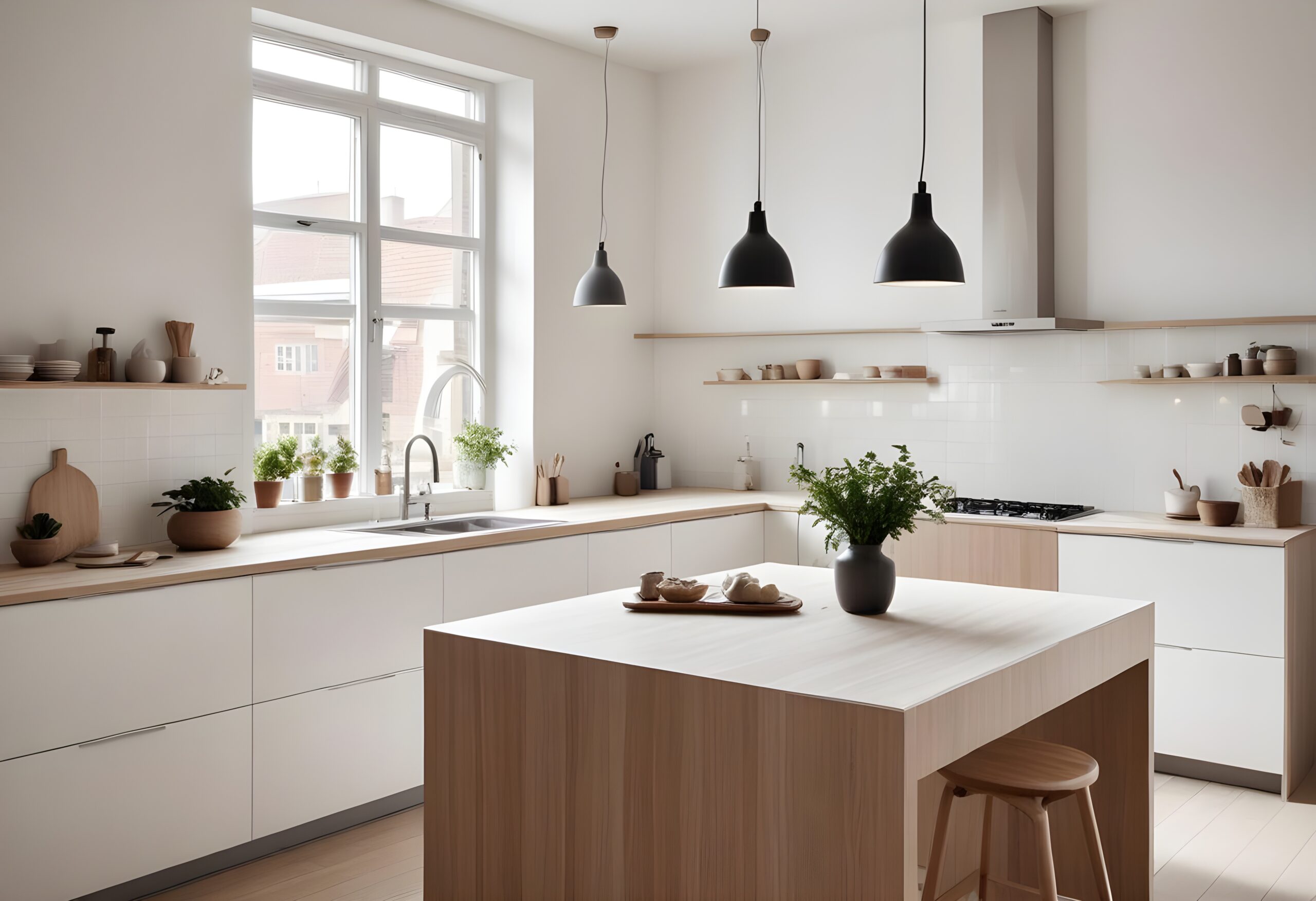
Another major weakness of laminate countertops is their low resistance to heat. Unlike natural stone or solid-surface materials, laminate countertops are constructed from layers of paper or fabric mixed with resin. This actually makes them quite sensitive to heat damage. Direct contact of pots, pans or other heated appliances on the laminate surface will soften the resin; this, creating blisters, warping or marks on the laminate. Most of these heat damages are irreversible and can destroy the appearance and functionality of the countertop.
In kitchens, due to the high temperatures, it is this very vulnerable that calls for more precautions. Home owners should be equipped with trivets, hot pads or heat-resistant mats which they can set their hot cookware on to further protect the laminate surface. Sometimes, this may be a hassle due to the increased steps. Furthermore, it is easy to accidentally place hot items and cause unintended damage which can be very costly and difficult to repair. Unlike natural stone or quartz which can often support higher temperatures without incurring damage, laminate is not built for the same kind of strength and has limited practical applications when it comes to certain kitchen tasks.
Heat resistance also affects laminate countertops with regard to their durability and attractive appearance in the long run. Repeated exposure can create more damage over time and the heat can make the countertop look more worn out than usual. This can decrease its appeal and value in a home. Furthermore, since laminate can be permanently damaged by heat in most instances, this means that home owners may have to end up replacing the entire countertop more often especially when compared to those who are using more heat-resistant countertop materials.
Sign Up For Kitchen Design Ideas
Join over 5,000 homeowners subscribed to our newsletter!

